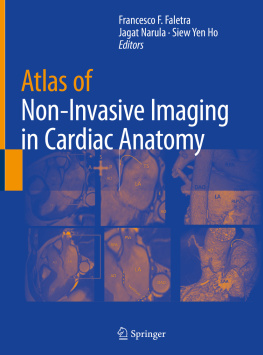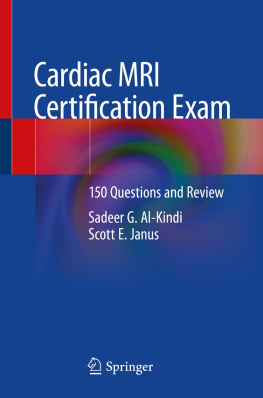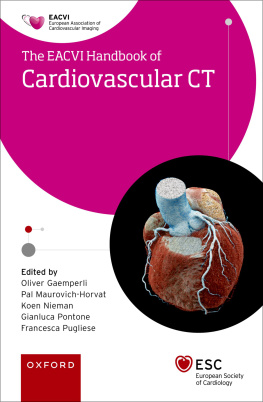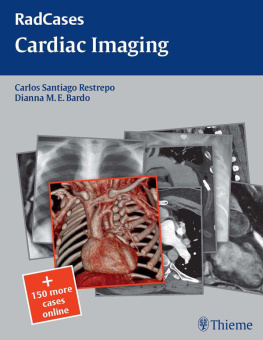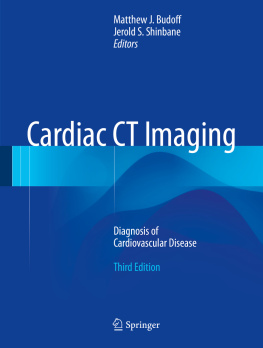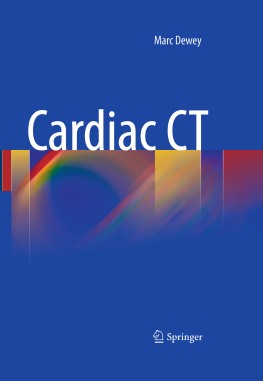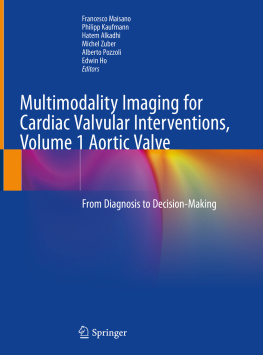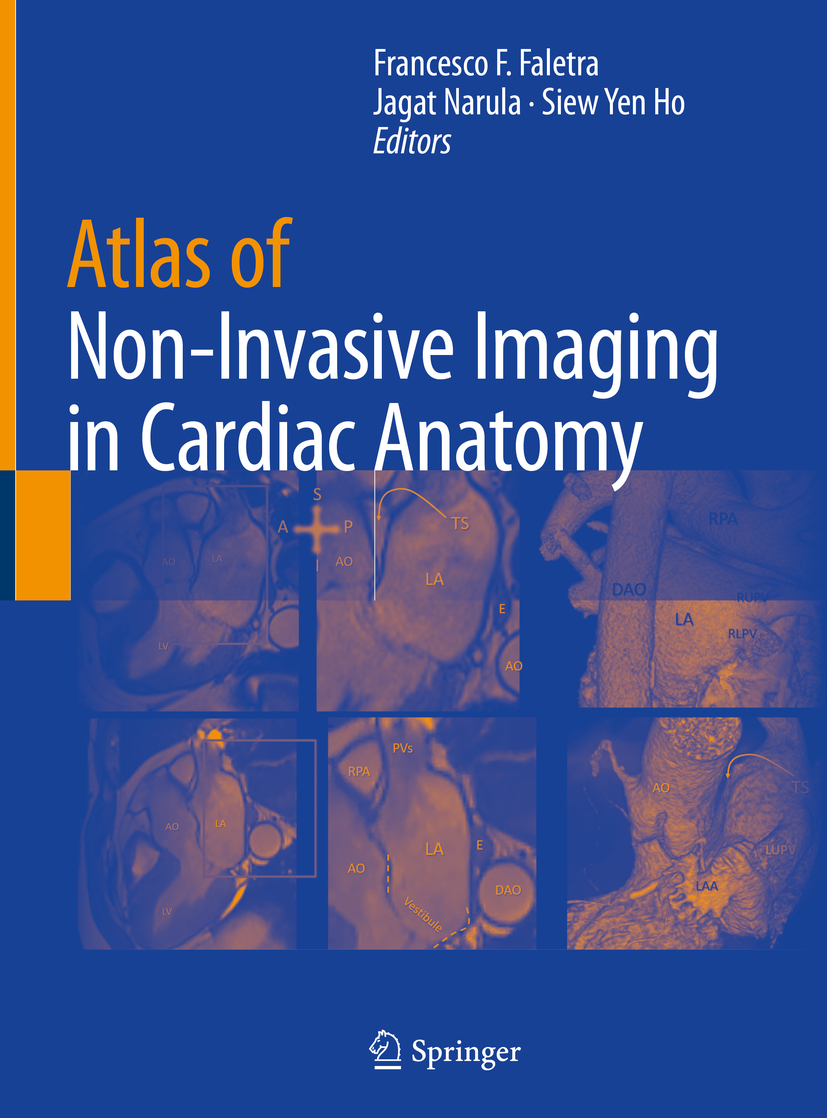Editors
Francesco F. Faletra
Department of Cardiology, Cardiocentro Ticino, Lugano, Switzerland
Jagat Narula
Icahn School of Medicine at Mount Sinai, New York, NY, USA
Siew Yen Ho
Royal Brompton Hospital, London, UK
ISBN 978-3-030-35505-0 e-ISBN 978-3-030-35506-7
https://doi.org/10.1007/978-3-030-35506-7
Springer Nature Switzerland AG 2020
This work is subject to copyright. All rights are reserved by the Publisher, whether the whole or part of the material is concerned, specifically the rights of translation, reprinting, reuse of illustrations, recitation, broadcasting, reproduction on microfilms or in any other physical way, and transmission or information storage and retrieval, electronic adaptation, computer software, or by similar or dissimilar methodology now known or hereafter developed.
The use of general descriptive names, registered names, trademarks, service marks, etc. in this publication does not imply, even in the absence of a specific statement, that such names are exempt from the relevant protective laws and regulations and therefore free for general use.
The publisher, the authors, and the editors are safe to assume that the advice and information in this book are believed to be true and accurate at the date of publication. Neither the publisher nor the authors or the editors give a warranty, expressed or implied, with respect to the material contained herein or for any errors or omissions that may have been made. The publisher remains neutral with regard to jurisdictional claims in published maps and institutional affiliations.
This Springer imprint is published by the registered company Springer Nature Switzerland AG
The registered company address is: Gewerbestrasse 11, 6330 Cham, Switzerland
Francesco F. Faletra
Preface
Cardiac morphology is probably the most captivating branch of the discipline of anatomy. Indeed, the first description of cardiac anatomy can be found in the Ebers Papyrus from pre-Hippocratic era. The Egyptians considered the heart as the origin of all vessels and correlated vessel pulsatility to cardiac contractility. Subsequently, Hippocrates and his colleagues wrote the first book with detailed description of the anatomy of the heart and the cardiovascular system. In the Greek era, Herophilus distinguished arteries from veins based on their structure, and Erasistratus provided the description of heart valves. In the Roman era, Galen described the vena cava and hepatic veins connecting with the right ventricle through the right atrium and explicitly distinguished between inlet and outlet valves.
In the medieval era, Leonardo da Vinci made the most impressive contributions to cardiac anatomy; some of his imaginative descriptions and drawings amaze even the modern-day morphologists. He described four heart chambers, as we know them today, and distinguished the atria from the appendages. The most celebrated of his contributions was the study of the aortic root: his drawings of the aortic root, leaflets, and the vortex in the sinuses are among the most startling in the history of medicine.
In the sixteenth century, the University of Padua Medical School played a fundamental role in advancing the knowledge of cardiac anatomy. Andreas Vesalius, a famous teacher of Anatomy and Surgery, published two books entitledSix Anatomical TablesandThe Factory of the Human Bodyhighlighting the left atrioventricular valve as themitral valvebecause of its resemblance with a bishops miter. In the seventeenth century, other eminent anatomists including Colombo, Harvey, Lower, and Stensen refined the anatomic structure of the heart as a four-chambered organ and the passage of blood through the heart, lungs, and the entire body. Vieussens, Thebesius, de Senac, and Scarpa continued to explore in the next century and defined the anatomy of coronary arteries, cardiac veins, coronary sinus, Thebesian valve, and mitral subvalvular apparatus.
Hundreds of publications have since then been written by cardiac anatomists who have extensively reported the morphological and functional characteristics of the heart. However, these publications have seldom reached the cardiology community, and the clinical cardiologists have remained oblivious to the anatomical research. For centuries, the anatomy of heart has been taught to the medical students in the dissection halls using cadavers, with limited understanding of three-dimensional orientation of the complex organ.
In the past two decades, sophisticated imaging techniques, such as computed tomography, cardiac magnetic resonance imaging, and three-dimensional echocardiography, have been able to illustrate anatomical details of the heart with a previously unimaginable quality. These diagnostic techniques have predominantly been used only for diagnostic purposes. However, these imaging modalities can provide an enormous source of high spatial and temporal resolution compared with normal macroscopic images of cardiac structures and can offer most valuable aids for teaching anatomy to medical students. Because of theirthree-dimensionalnature, every cardiac structure can be seen in countless perspectives.
The main objective of this atlas is to compare and contrast the sophisticated anatomical silhouettes with the exquisite imaging details. In particular, this book will focus on the anatomic structures which are most relevant for clinical cardiologists and cardiac interventionalists. To document the actual anatomy with fidelity, most noninvasive images are accompanied side by side with anatomical specimens.
We are convinced that in the third millennium medical students and, in particular, cardiologists will be able to learn cardiac anatomy throughin vivoimaging. This must become the preferred mode of teaching in medical schools as an additional tool to the classic anatomy through cadaveric dissection and anatomic specimens. We sincerely hope that this book will help the evolution of cardiologists who will be adept with bedside imaging and rapid diagnostic algorithms.
Francesco F. Faletra
Siew Yen Ho
Jagat Narula
Lugano, Switzerland London, UK New York, NY, USA
Contents
Francesco F. Faletra , Tiziano Cassina , Laura A. Leo , Vera L. Paiocchi , Siew Yen Ho and Jagat Narula
Francesco F. Faletra , Enrico Ferrari , Giovanni Pedrazzini , Siew Yen Ho and Jagat Narula
Francesco F. Faletra , Laura A. Leo , Vera L. Paiocchi , Stefanos Demertzis , Giovanni Pedrazzini and Siew Yen Ho
Francesco F. Faletra and Siew Yen Ho
Francesco F. Faletra , Laura A. Leo , Vera L. Paiocchi , Susanne A. Schlossbauer and Siew Yen Ho
Francesco F. Faletra , Laura A. Leo , Vera L. Paiocchi , Susanne A. Schlossbauer , Giovanni Pedrazzini , Tiziano Moccetti and Siew Yen Ho
Francesco F. Faletra , Marco Araco , Laura A. Leo , Giovanni Pedrazzini , Tiziano Moccetti , Marco Moccetti , Elena Pasotti and Siew Yen Ho

